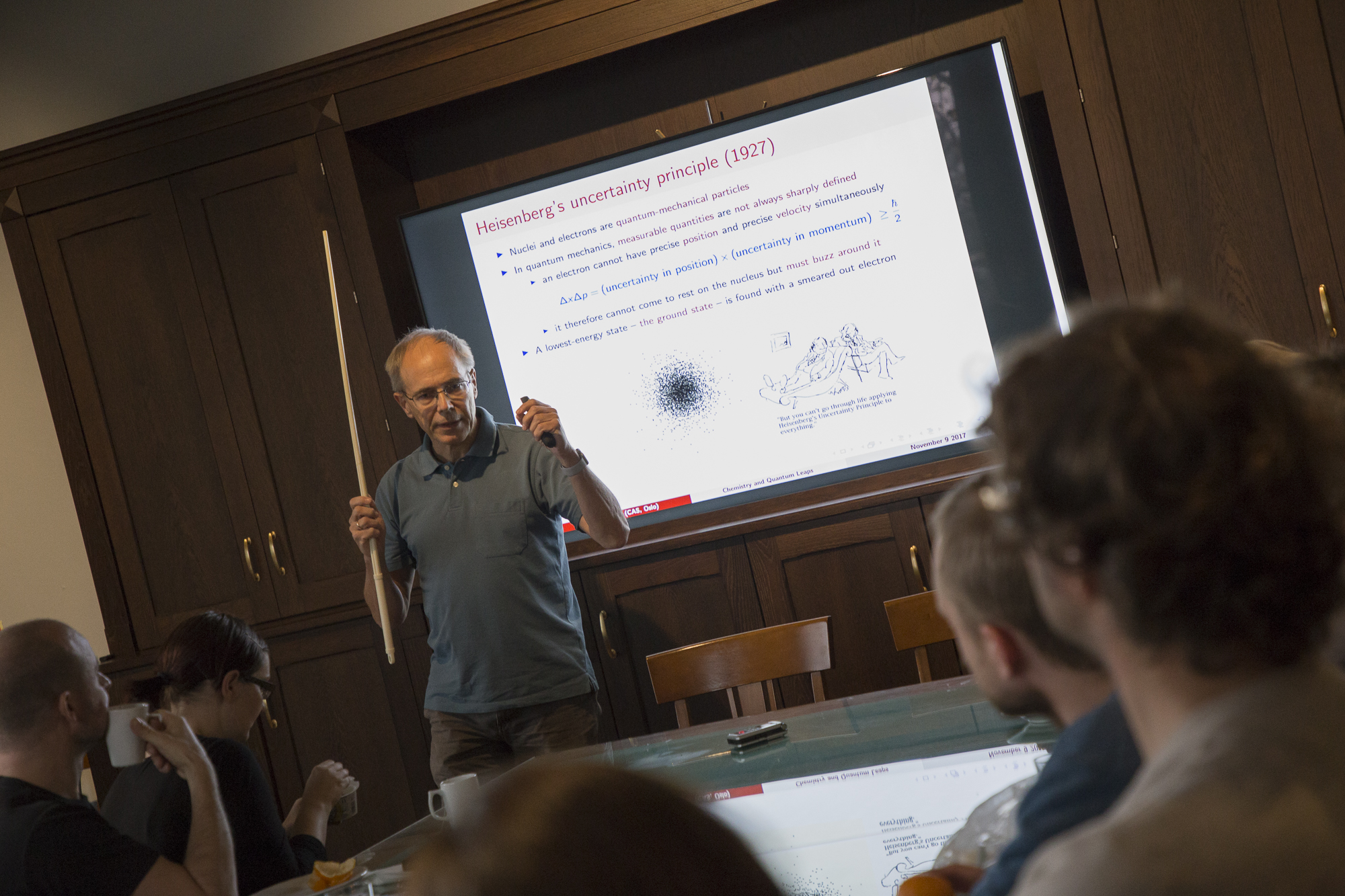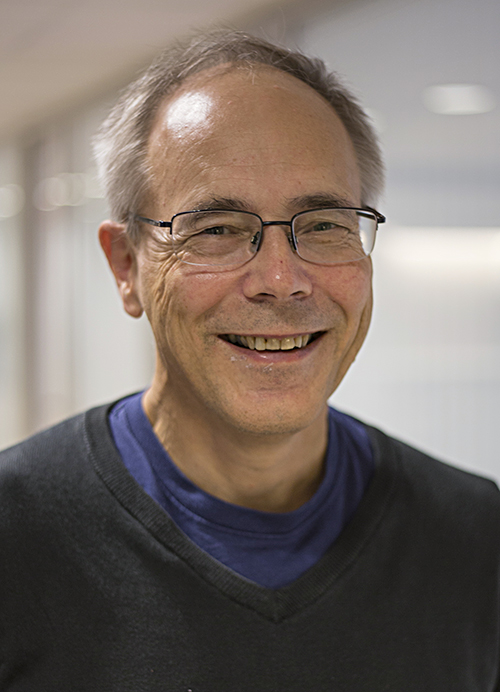Research in Review: 'Molecules in Extreme Environments'

The 2017/18 academic year is coming to a close. After a year at CAS, the fellows are preparing to return to their home institutions and build on the research that began at the Centre.
We sat down with CAS project leader Trygve Ulf Helgaker, professor of theoretical chemistry at the University of Oslo (UiO), for an exit interview on the project Molecules in Extreme Environments.
Molecules in Extreme Environments was a far-out project. That's not an exaggeration -- the computational and theoretical chemists who gathered at CAS during the 2017/18 academic year used highly accurate calculations to simulate how atoms and molecules behave in conditions found light years from Earth.
The scholars has focused mainly on two such conditions: powerful magnetic fields and high pressure, as well as the combination of those two conditions.
The project has produced an impressive amount of research so far, and more is on the way. More than a dozen scholarly articles have already been published, and Helgaker said he expects that total will double as the scholars turn the bulk of their research at CAS into publications.
The results of the project show that research in the natural sciences isn't all laboratories and experiments. By spending a year at CAS together, the scholars have created new opportunities for collaboration and knowledge that could form the foundation for scientific breakthroughs.
How did the year at CAS play out? Read on!
Read all our coverage of Molecules in Extreme Environments here.
'It’s an environment which blows your mind.'
- Peter Schwerdtfeger, professor of theoretical chemistry at Massey University in Auckland, New Zealand.
Read the full in-depth interview here.
Q&A - Trygve Ulf Helgaker
- How would you sum up your year at CAS?

We’ve studied noble gases turned into solids by high pressure. What we looked at was how those solids are affected by magnetic fields. When we run the calculations, we see that adding a strong magnetic field greatly increases the melting point. This is really exciting, because I’m learning something new. I haven’t conducted these types of studies before.
We’ve also studied an effect that’s a little hard to explain. It’s something known as closed shells. Most molecules -- like water -- have closed shells. That means their shells contain the maximum number of electrons permitted. Such systems are relatively stable and less reactive than systems with open shells. What normally happens when you add a magnetic field is that systems with closed shells increase in energy, while those with open shells will decrease. But then there are some molecules with closed shells where the energy first decreases, then increases. We’ve studied that in a way that wasn’t possible previously. That’s another article that’s in the works that many of us also are collaborating on.
We’ve also done some work on different methods of calculating excitation energy -- the energy required for a system to jump from one energy state to the next. There are a number of techniques that have been developed over the years to calculate it, but not a lot of work has been done on the effect of magnetic fields. We’re using a whole new tool for that work.
Then, together with Maria [Dimitrova] -- and Dage [Sundholm] was also involved -- we’ve looked at what happens with larger molecules in magnetic fields. Previously we’ve studied molecules consisting of atoms that are commonly found in the universe -- hydrogen and simple helium systems, for example -- and how they are stabilised in new ways. But what if you take a larger molecules consisting of heavier atoms? We hadn’t really looked at that before. Maria started running the calculations, and we found that magnetic fields seem to break these molecules down into smaller fragments.
Let's see -- did I cover everything? Peter is leading a larger project -- a general study of what’s known as confinement. Generally speaking, when you add pressure, everything gets smaller. It’s forced together. It’s a way of confining, limiting. That means it takes a lot of energy for electrons to move farther away from the nucleus, so everything shrinks. That has been the most important connective tissue between studying magnetic fields and high pressure. We’ve gotten a lot of help from Dage and [Hans-Joachim Werner], who have a type of software that is able to conduct these highly accurate calculations. That’s another big article that’s almost completed.
- Based on the scholarly articles we've written about, your group has been really productive. Do you have an indication of how many articles will result from this stay?
Helgaker: I know that it was 14 the last time I checked. That’s just counting articles that have already been submitted, which means we should reach at least double that. The main work has yet to be submitted -- meaning the articles where everyone is contributing. There are a lot of productive people here.
- Did you run into any major surprises along the way, or did everything go according to plan?
Helgaker: I never plan out every single detail of a research project, so I’m not that surprised that there were certain topics we didn't get to explore. You just have to deal with topics as they come along. There have been so many different people here that all you can do is ensure that everyone is able to contribute and take ownership of something.
I thought we might look more at powerful currents, but we never got started on it. On the other hand, we were able to look at melting transitions. When I realised that we weren’t going to get started on something, I didn’t waste more time on it. We’ll have to get to it in the future.
What I really liked -- and I wish I had thought of this sooner -- was having the younger scholars here with us. Those are the people who do a lot of the foundational work. There have been lots of good conversations with lots of people I didn’t know.
All in all, I’m actually very satisfied with everything. When you’re getting started on something like this, it’s a big, open-ended question. All you can do is hope to create as many exchanges of knowledge as possible. We’ve seen new collaborations, new constellations that will continue into the future.
- Speaking of those new constellations, how do you see yourself building on your work at CAS?
Helgaker: I have my centre [the Hylleraas Centre for Quantum Molecular Sciences at UiO]. We have six main research topics, and extreme environments is one of them. I’m going to nurture it and make sure that it continues to develop.
Peter is going to arrange the 18th International Congress of Quantum Chemistry in New Zealand in about six years. He wants to do a satellite meeting on chemistry in extreme environments that Jürgen [Gauss] and I are responsible for organising. That gives us something to look forward to and build toward -- a long-term goal.
In a sense, I feel that this topic -- chemistry in extreme environments -- has been elevated to a higher level. It has brought in more people. An acquaintance of mine actually came up to me recently and asked ‘Why are so many people working on this topic?’